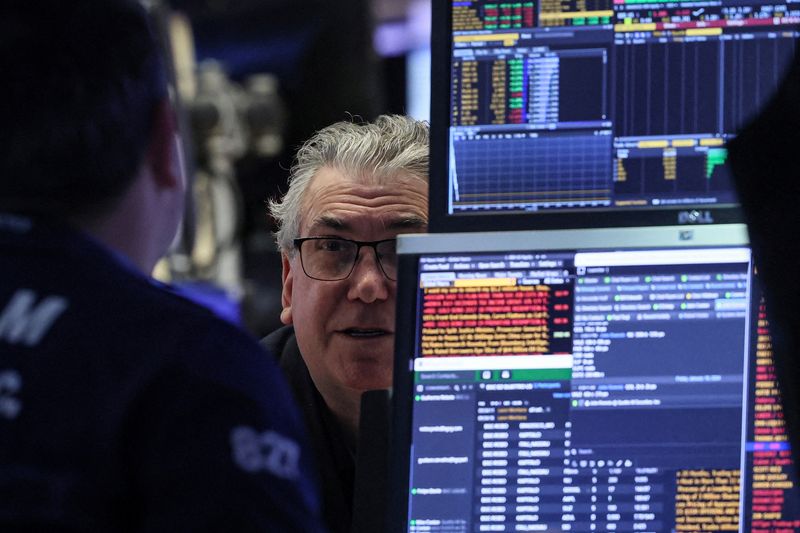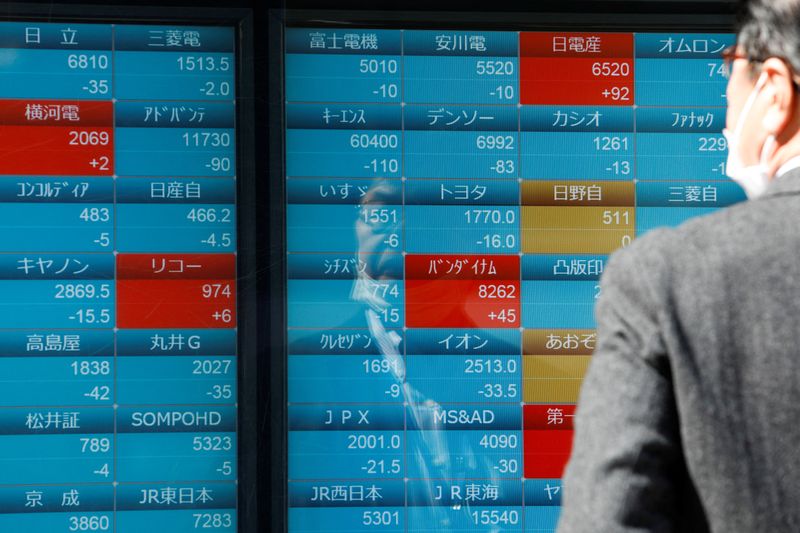By Stephen Culp
NEW YORK (Reuters) - Tech shares helped power the S&P 500 to its first record high close in two years on Friday to confirm a bull market, while European stocks registered weekly declines amid fading expectations for central bank interest rate cuts.
Treasury yields inched lower, while supply concerns arising from simmering tensions in the Middle East pushed oil prices higher for the week.
In establishing its first all-time closing high since January 2022, the S&P 500 confirmed, by one measure, that it entered a bull market after touching its Oct. 2022 trough.
All three major U.S. stock indexes surged more than 1% on the day, and ended the holiday-shortened week with gains over last Friday's close.
"The rally in November and December was impressive," said Ross Mayfield, investment strategy analyst at Baird in Louisville, Kentucky. "So while a period of consolidation was not unexpected, ultimately you want to see things move higher."
"It’s a real positive even at a time when rates have ticked a little bit higher, and investors are calling into question how soon the Fed will cut interest rates," Mayfield added. "And yet the market has marched on anyway."
A sunnier-than-expected consumer sentiment reading added to the list of solid economic data released this week, notably retail sales and jobless claims.
The robust indicators dampened expectations that the Federal Reserve would start cutting its key policy rate as soon as March, while also providing assurance that the U.S. economy was under no immediate threat of recession.
"The data has been strong on the economic side, and inflation came in slightly above consensus," Mayfield said. "If something doesn't meaningfully change by then, I don’t see why the Fed would cut interest rates in March."
Even so, at last glance, financial markets have priced in a 46.2% probability that the central bank will cut the Fed funds target rate by 25 basis points in March, according to CME's FedWatch tool.
Market participants will increasingly focus on fourth quarter earnings next week as the reporting season shifts into high gear.
To date, just over 10% of the companies in the S&P 500 have reported results for the Oct-Dec period, 85% of which have beaten analyst expectations, according to LSEG I/B/E/S.
The Dow Jones Industrial Average rose 394.99 points, or 1.05%, to 37,863.6, the S&P 500 gained 58.86 points, or 1.23%, to 4,839.8 and the Nasdaq Composite added 255.32 points, or 1.7%, to 15,310.97.
European shares clocked a weekly decline on fading optimism that major central banks would soon begin reducing borrowing costs.
The pan-European STOXX 600 index lost 0.26% and MSCI's gauge of stocks across the globe gained 1.06%.
Emerging market stocks rose 1.05%. MSCI's broadest index of Asia-Pacific shares outside Japan closed 1.23% higher, while Japan's Nikkei rose 1.40%.
U.S. 10-year Treasury yields edged lower, pausing after several sessions of gains.
Benchmark 10-year notes were last down rose 3/32 in price to yield 4.1341%, from 4.144% late on Thursday. The 30-year bond rose 16/32 in price to yield 4.3437%, down from 4.372%.
The dollar inched down against a basket of world currencies, but remained poised for a weekly advance amid cooling rate cut optimism.
The dollar index fell 0.26%, with the euro up 0.18% to $1.0894.
The Japanese yen strengthened 0.01% versus the greenback to 148.14 per dollar, while sterling was last trading at $1.2701, down 0.03% on the day.
Crude prices dipped but were higher for the week as supply concerns arising from mounting tensions in the Middle East outweighed worries over softening demand.

U.S. crude dropped 0.90% to settle at $73.41 per barrel, while Brent settled at $78.56 per barrel, down 0.68% on the day.
Spot gold added 0.3% to $2,028.16 an ounce but appeared set for the biggest weekly decline in six.
